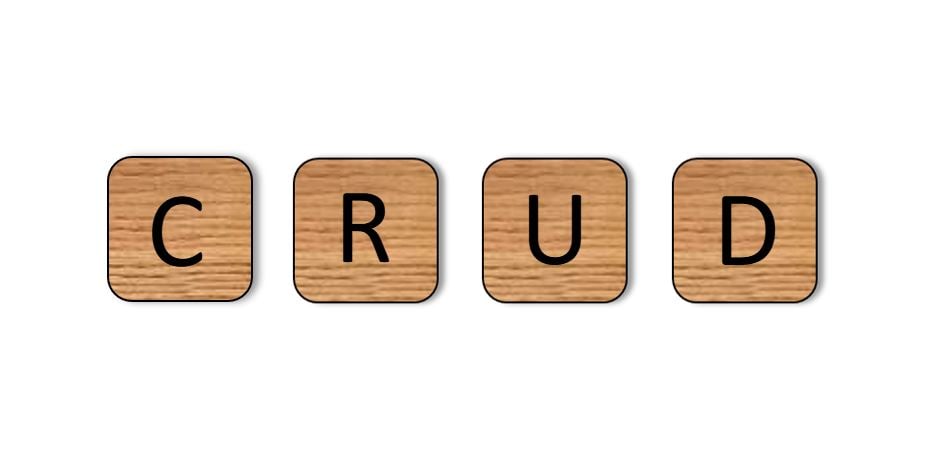CRUD is an acronym used in IT that stands for Create, Read, Update, and Delete. These functions are the essential operations that are necessary to create and maintain up-to-date information in a database. They can have different command names depending upon the programming language, context, and data source being accessed. Here are the list functions, description of what operations they perform, and common names for various programming language commands:
-
Create – is used to insert new data into the database that did not previously exist.
Commonly used commands include insert and createfile.
-
Read – is used to look at data that already exists.
Commonly used commands include select, get, and readfromfile
-
Update – is used to change existing data.
Commonly used commands update, put, and updatefile.
-
Delete – is used to remove data.
Commonly used commands delete, deletefile, and remove.
HIE’s Don’t Have CRUD.
Health information exchanges (HIE’s) including Trusted Exchange Framework and Common Agreement (TEFCA) are implemented as read-only queries. This means that providers cannot create new information, update existing information, nor delete incorrect data. This frustrates providers and patients because they don’t have the ability to keep the record accurate and up to date.
Direct Protocol Has CRU.
Unlike HIE’s that are read-only, the Direct Protocol can be used to create, read, and update health information and the Direct Protocol creates an audit trail of all changes.
Direct Protocol can be used to:
- Deliver data to the provider at the point of care inside their EHR and routed to an individual patient’s chart.
- Bi-directionally communicate among patients, providers, and payers.
- Send demographic and insurance data at the time of referral of a patient.
- Improve care coordination.
- Create new patients.
- Create new entries for items such as new problems, medications, allergies, past, family, social history, review of systems, vitals, laboratory test results, radiological reports, physical therapy notes, clinical notes, send and/or receive event notifications for patient admission, discharge, and transfer to or from the hospital, and much more.
- Record patient-generated health data from devices and from patient complete forms.
- Send and receive Direct Messages which can also be used to automate repetitive tasks reducing the burden on providers and staff. For example, a provider can receive an event notification of one of their patients being admitted to the hospital admission and respond with the patient's most recent medical records. Using trigger events, Direct Protocol can be used for always-on interoperability where sharing medical records seamlessly and automatically occurs behind the scenes and without human intervention. Appropriate information keeps flowing to those who have a need to know.
A huge benefit of Direct is that the data is accurate because it matches the data that was sent by the sending system. Original records are stored in a database. This improves the overall user experience and is more interactive for the user. Transactions can also be sent in near real-time reaching the provider quickly with the most up-to-date data.
Delete is a little different animal. Delete is removing the records and/or data from a medical record. When deleting we need to go back to the source that created the record. Let’s look at the past to understand the future.
In the old days, when we had paper records, the provider that created the original record crossed out the incorrect information using a single fine line so that the underlying text was still readable, then wrote in the new correct information, and then initialed and dated the entry. This way there was a manual audit trail of the old record and the new record. Today we can do the same with an electronic amendment to the record, however, just like the paper example an amended medical record does not change the original. The original stays the same with an entry stating the amendment. Further, the amendment should also contain the provider that changed the record, date, and time stamp, and must be signed by the provider making the change.
Some of the key benefits of CRU operations help are:
- Streamlined Data Management: CRUD operations allow healthcare professionals to efficiently create, access, modify, and delete patient records, ensuring that the data is up-to-date and accurate. This streamlined management of data reduces the risk of errors and facilitates better clinical decision-making.
- Improved Patient Care: With accurate and readily available data, healthcare providers can better assess patient needs and make informed decisions regarding their care. This leads to improved patient outcomes, as well as more personalized and targeted treatments.
- Enhanced Interoperability: Health IT systems that support CRUD operations can easily bidirectionally exchange data with other systems, promoting interoperability between different healthcare organizations, departments, and providers. This seamless data exchange is essential for care coordination and collaboration among healthcare professionals.
- Regulatory Compliance: Health IT systems that support CRUD operations are better equipped to comply with privacy regulations, such as the Health Insurance Portability and Accountability Act (HIPAA), which mandate the secure handling of patients' personal health information. These systems can control access to patient data, track changes, and maintain audit logs, thereby helping to ensure regulatory compliance.
- Reduced Administrative Burden: Health IT systems with CRUD capabilities help reduce the administrative burden on healthcare professionals by automating routine tasks, such as data entry and retrieval. This frees up time and resources for direct patient care and other high-value activities.
In summary, CRUD operations in Health IT systems are critical for the efficient management of healthcare data, leading to better patient care, improved interoperability, regulatory compliance, and near real-time data-driven decision-making.
Sign up today for iShare Medical Messaging and start sharing medical records now. Call us today at 816.249.2555 or email us at info@isharemedical.com.
![iShareLogo-CircR-NoBG-150px[1] iShareLogo-CircR-NoBG-150px[1]](https://blog.isharemedical.com/hs-fs/hubfs/iShareLogo-CircR-NoBG-150px%5B1%5D.png?width=331&height=150&name=iShareLogo-CircR-NoBG-150px%5B1%5D.png)
